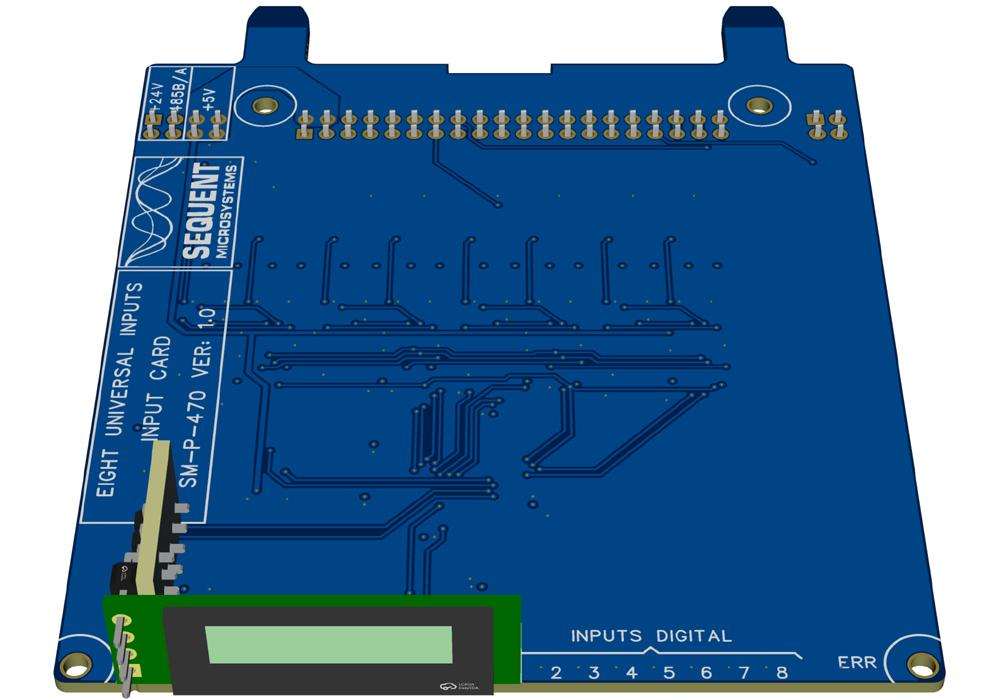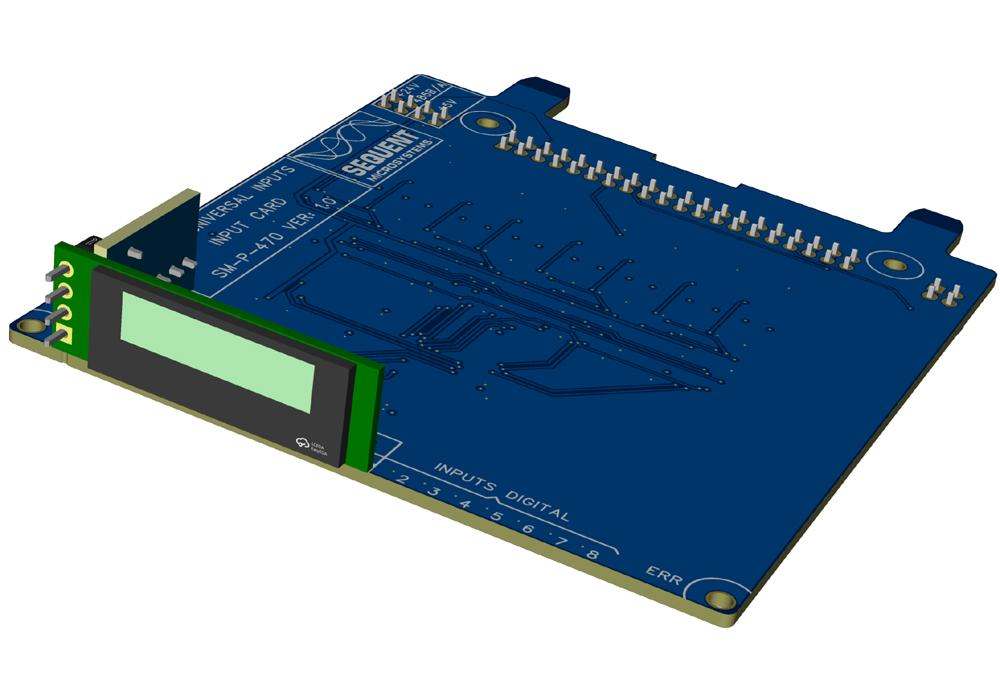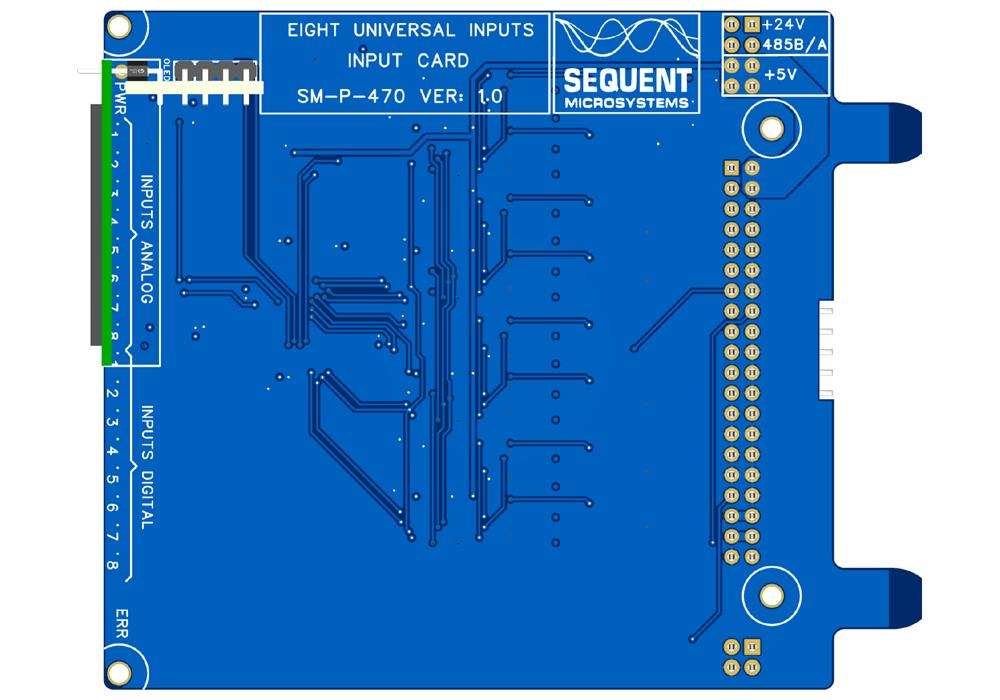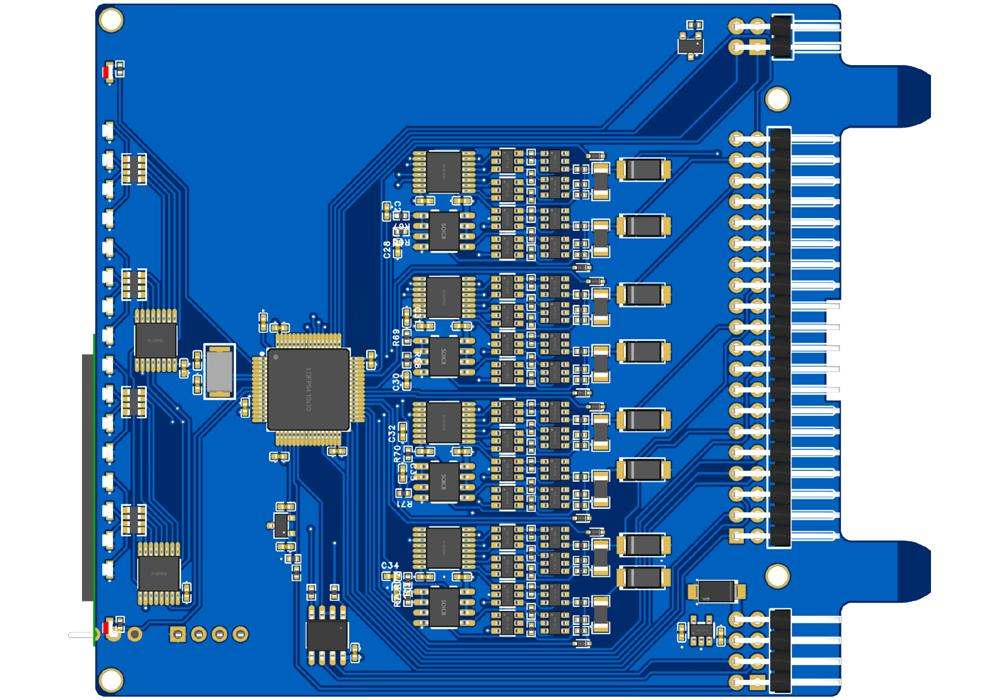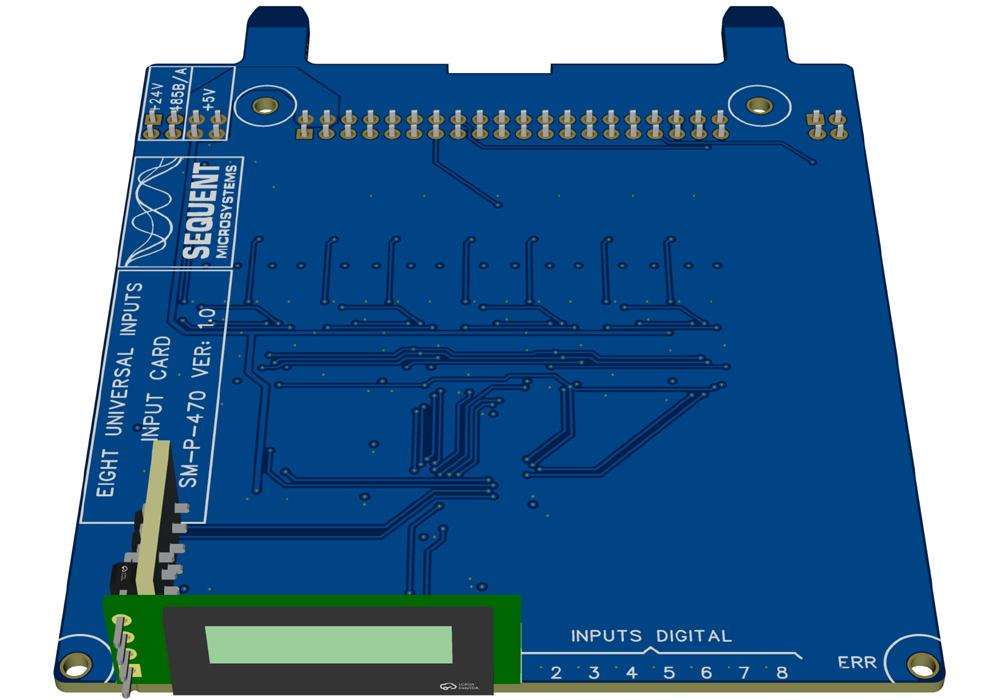
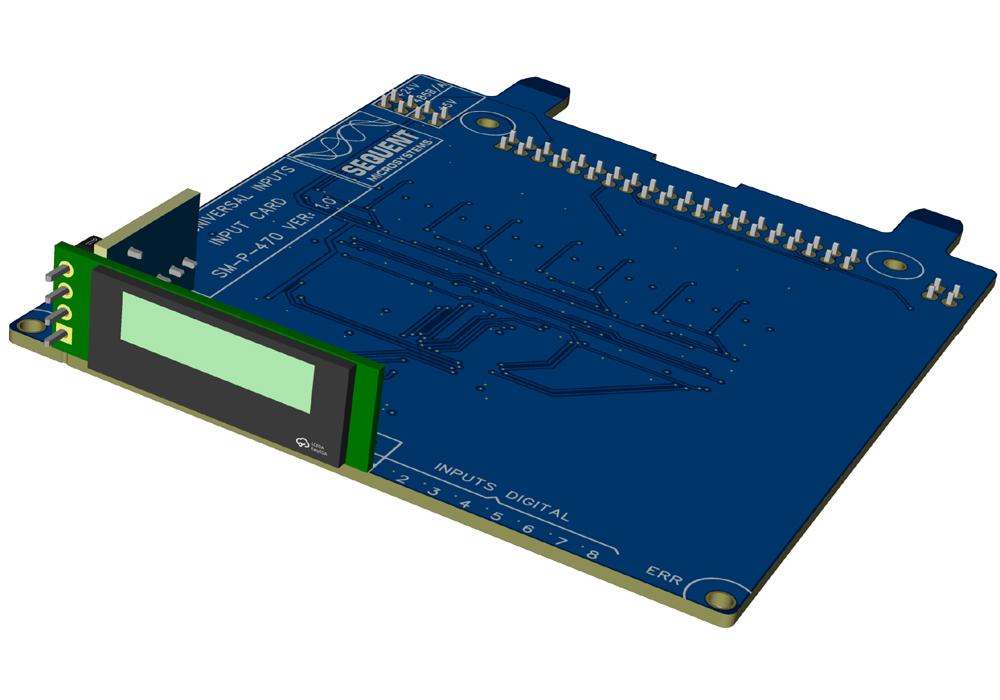
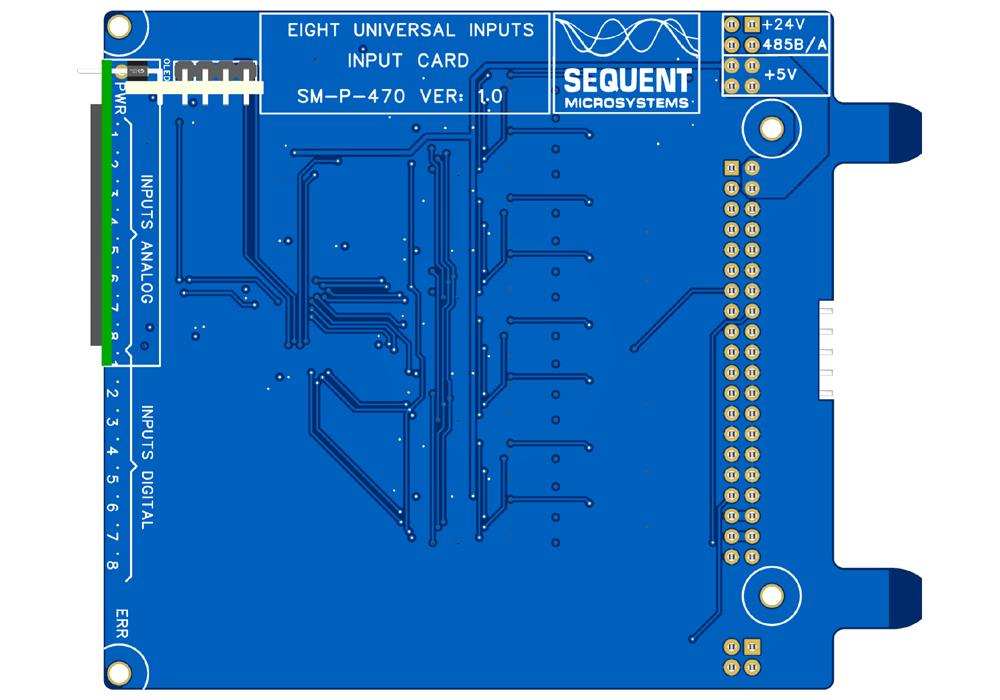
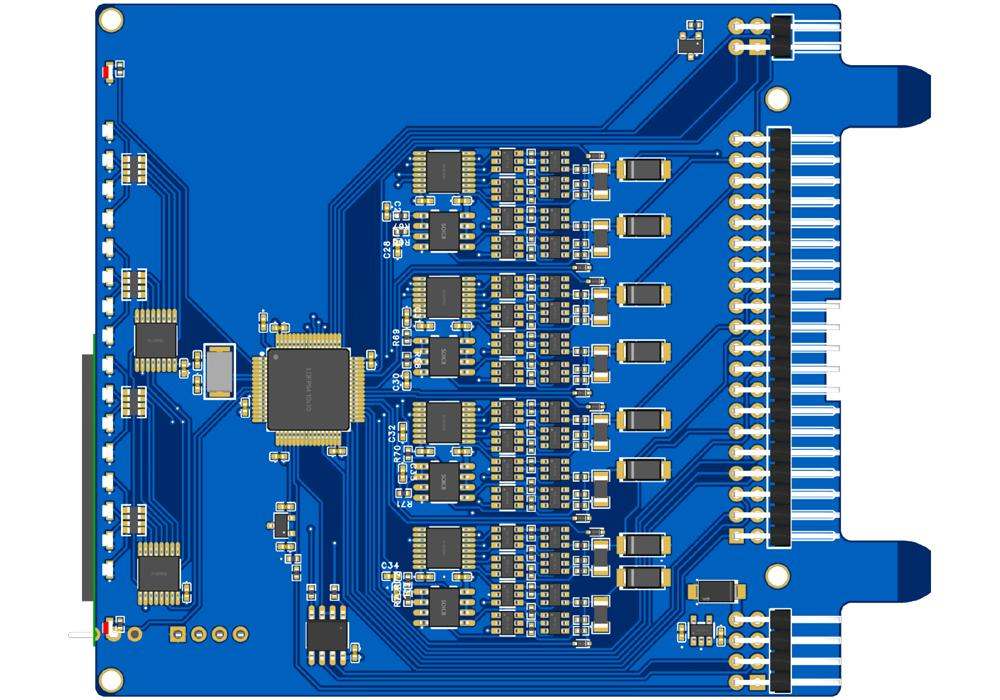
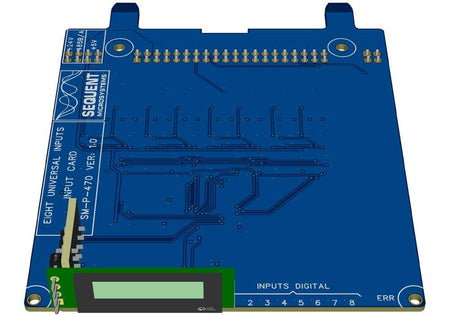
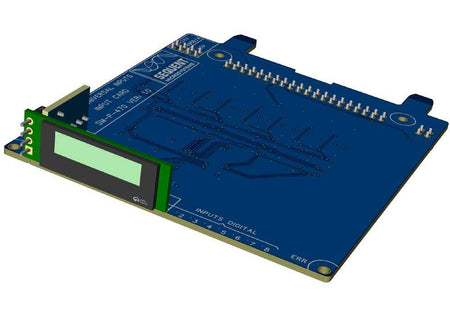
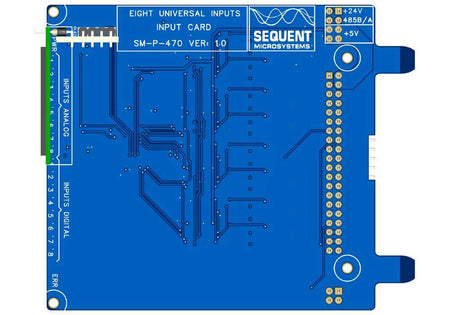
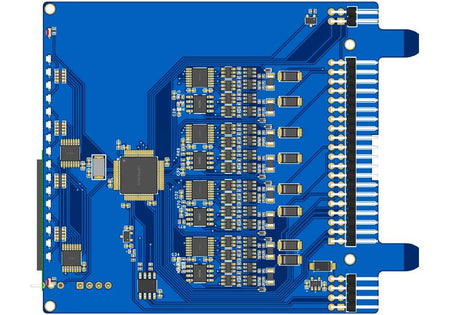
8-Channel Universal Input Card for Raspberry Pi Back Panel
8-Channel Universal Input Card: 0-3.3V, 0-10V, 4-20mA, 1K/10K Thermistors, Dry Contact/Counters
The 8-Channel Universal Input Card for Raspberry Pi Back Panel features eight universal analog/digital inputs routed to the Back Panel terminal blocks.
Seamlessly integrated with the Raspberry Pi Back Panel, the card supports Command Line, MODBUS RTU over RS485, OpenPLC, and CODESYS.
FEATURES
-
Eight Universal Input Channels
Each input can be software-configured to read 0–3.3 V, 0–10 V, 4–20 mA, 1k/10k thermistors, dry contact, or counter inputs. -
Seamless Raspberry Pi Integration
Plugs directly into the Raspberry Pi Back Panel — no additional wiring or hardware needed. -
Expandable Stack Design
Stack up to 8 identical modules horizontally for larger projects. -
MODBUS Support via RS485
Integrated RS485 port allows MODBUS RTU communication for easy industrial integration. -
Real-Time Status LEDs
LED indicators provide immediate visual feedback. -
Built-in OLED Display
128×32 dot-matrix screen for displaying system status, messages, or sensor values. -
Cross-Platform Software Support
Includes Python library and command-line tools for rapid development. -
OpenPLC & CODESYS Compatible
Industrial-grade compatibility with both OpenPLC and CODESYS environments. -
No Export Restrictions
ECCN classification EAR99 — freely exportable under U.S. regulations.
DESCRIPTION
Part of the HOP (Hardware On Panel) family developed by Sequent Microsystems, the 8-Channel Universal Input Card is designed to integrate seamlessly with the Raspberry Pi Back Panel. Up to eight HOP cards — of any type — can be installed on a single Back Panel, offering maximum flexibility for industrial automation applications. Multiple Back Panels can be connected horizontally to support larger projects.
Like all HOP cards, the 8-Channel Universal Input Card features 18 LED indicators. The power LED blinks when power is applied and the local processor is operational. An error LED illuminates when the dedicated PANIC pin on the Back Panel terminal block is activated. Sixteen additional LEDs display the real-time status of each input.
An RS485 port enables communication with external PLCs or industrial controllers using the industry-standard MODBUS RTU protocol.
Power Requirements
The card is powered via the Back Panel power connector.
- The local processor is powered from the 5 V rail through a 3.3 V LDO regulator and consumes 10 mA.
WATCHDOG: If the watchdog is enabled and the Raspberry Pi fails to access the 8-Channel Universal Input Card within the preset time, the card signals the Back Panel, which performs a hard reset of the Raspberry Pi by turning the power off for 10 seconds.
STACK LEVEL: The stack level is automatically determined by the slot into which the card is inserted on the Back Panel. It is shown on the OLED display after power up. Up to eight cards of the same type can be connected to a single Back Panel installation.
INTERRUPT: Any HOP card can be programmed to interrupt the Raspberry Pi. The interrupt handler running on Raspberry Pi needs to monitor pin 37 on the GPIO interface.
BACK PANEL TERMINAL BLOCK PINOUT
Each slot on the Back Panel has allocated three 6-pin spring-loaded terminal blocks for IO wiring. The pinout is shown in the following picture:

Eight Universal Inputs: Odd-numbered inputs are routed to the high side, and even-numbered inputs to the low side.
- IO01–IO02: Input #1
- IO03–IO04: Input #2
- IO05–IO06: Input #3
- IO07–IO08: Input #4
- IO09–IO10: Input #5
- IO11–IO12: Input #6
- IO13–IO14: Input #7
- IO15–IO16: Input #8
- IO17: ERROR
- IO18: PANIC
IO17 is an open-drain output triggered by a predefined error condition on an out-of-bounds input. It can be used to activate an external alarm, or can be routed back to IO18 to reset the outputs to a predefined state.
IO18 is a dry-contact-to-ground input and can be activated by an external contact wired to the Back Panel terminal block. When triggered, it resets all outputs to a predefined state.
DOT MATRIX DISPLAY

The 8-Channel Universal Input Card includes a 128×32 dot-matrix display driven by the on-board processor. It can show status information, self-test results, and error messages. At power-up it displays the card name and the I²C address.
ELECTRICAL SPECIFICATIONS
- Power Supply: 5 V, 10 mA (Back Panel provided)
MECHANICAL SPECIFICATIONS

DOWNLOADS
- Hardware Schematic V1.0
- 2D DXF Mechanical
- 3D STEP Model
- 3D Printable Enclosure
SOFTWARE
- Command Line Drivers
- Python Libraries
- CODESYS Driver
- OpenPLC Module
QUICK START
- Plug the 8-Channel Universal Input Card on the Back Panel for Raspberry Pi and power up the system.
- Enable I²C communication on Raspberry Pi using
raspi-config. - Install the software from GitHub:
git clone https://github.com/SequentMicrosystems/sequent-cli.git
cd /home/pi/sequent-cli
sudo make install
sequent-cli univ-in -h
The program will respond with a list of available commands.
FAQ
Q: What is the function of this card?
A: It provides eight programmable inputs. Each input can be software-configured to read 0–3.3 V, 0–10 V, 4–20 mA, 1k/10k thermistors, dry contact, or counter digital signals.
Q: Can I mix this card with other HOP cards on the same Back Panel?
A: Yes, up to eight HOP cards of any type can be installed on a single Back Panel, allowing flexible I/O combinations.
Q: What software platforms are supported?
A: The card supports MODBUS RTU over RS485, and is compatible with OpenPLC, CODESYS, and Sequent’s command-line utilities.
Q: What do the LEDs indicate?
A: One LED indicates power and processor health, one signals an error (via the PANIC pin), and 16 LEDs display real-time input activity.
Q: How is the card powered?
A: Power is supplied through the 5 V rail of the Raspberry Pi Back Panel.
Q: Is this card stackable?
A: Yes. It can be stacked with up to seven other HOP cards per Back Panel. Additional Back Panels can be chained for larger systems.
Q: Can I use this card without a Raspberry Pi?
A: Yes, via RS485 and MODBUS RTU, the card can be controlled by an external PLC or industrial controller without a Raspberry Pi.
Related products
-
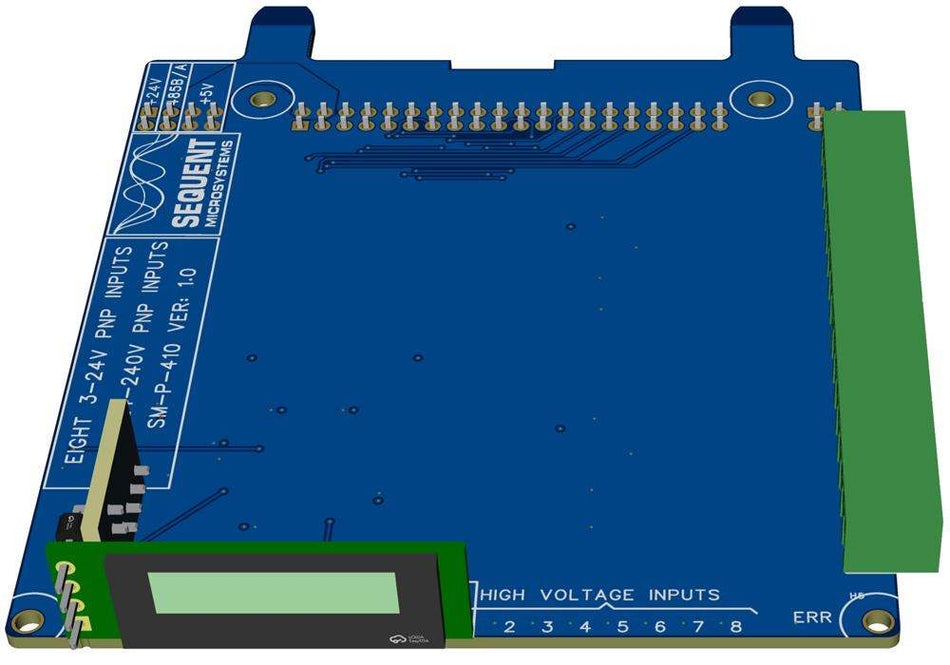 Coming soon
Coming soon16-Channel Digital Inputs HV/LV for Raspberry Pi Back Panel
8 High Voltage and 8 Low Voltage optoisolated PNP inputs for Sequent Microsystems Back Panel -
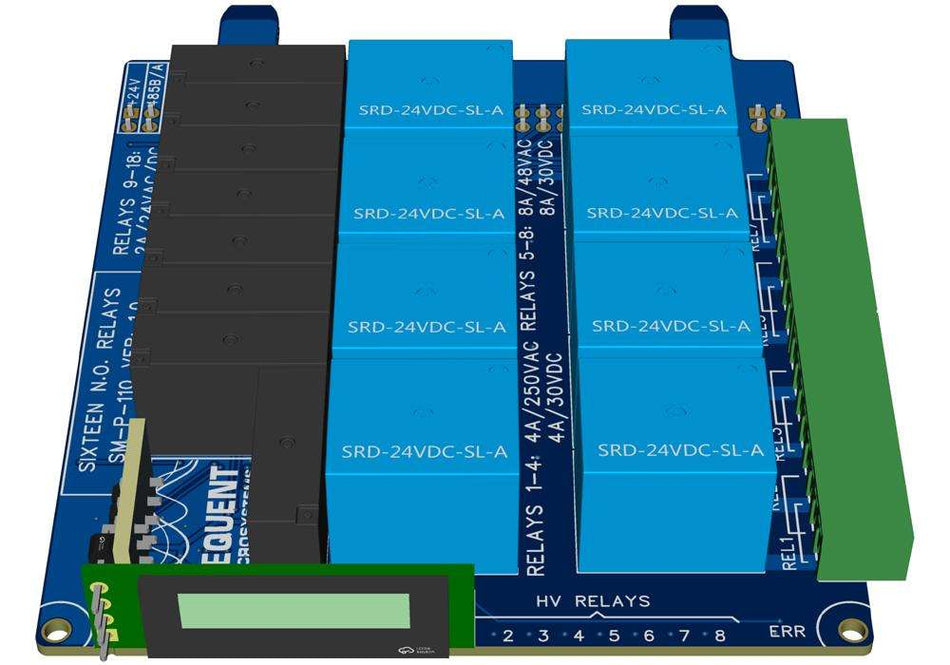 Coming soon
Coming soon16-Channel HV-LV Relay Card for Raspberry Pi Back Panel
16-channel relay card for Raspberry Pi Back Panel: 8 low power and 8 high power relays -
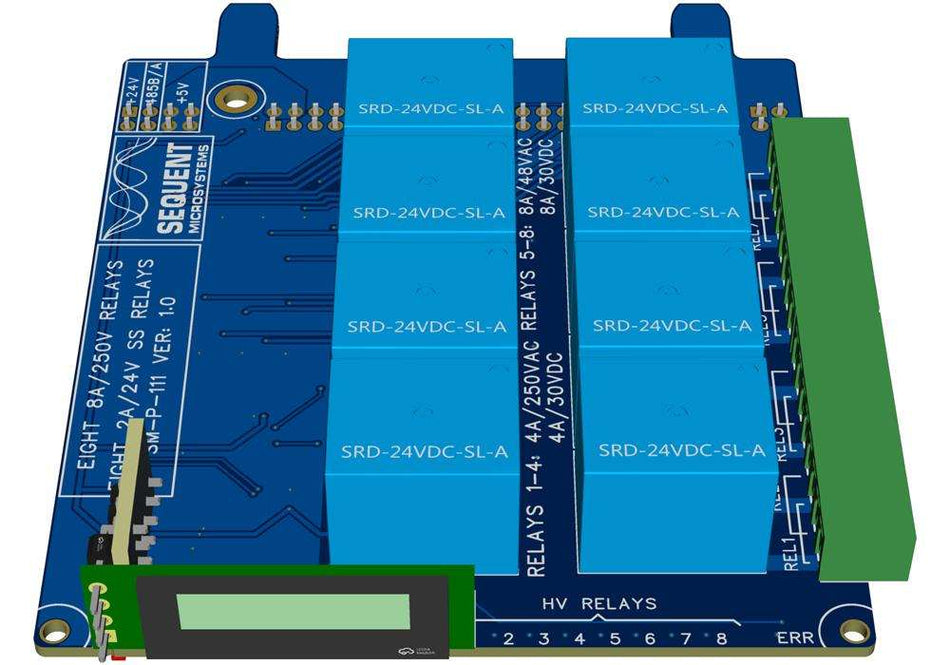 Coming soon
Coming soon16-Channel HV-SS Relay Card for Raspberry Pi Back Panel
16-channel relay card for Raspberry Pi Back Panel: 8 low power and 8 solid state relays -
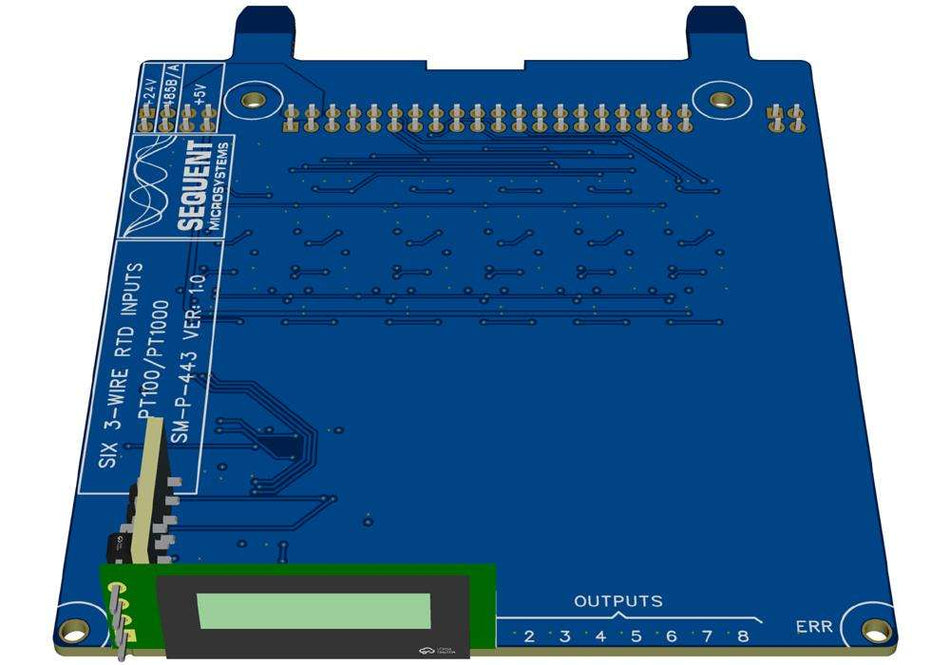 Coming soon
Coming soon6-Channel 3-wire RTD Card PT100 and PT1000 for Raspberry Pi Back Panel
Six channel RTD Card with Software Selectable PT100 or PT1000 probes

